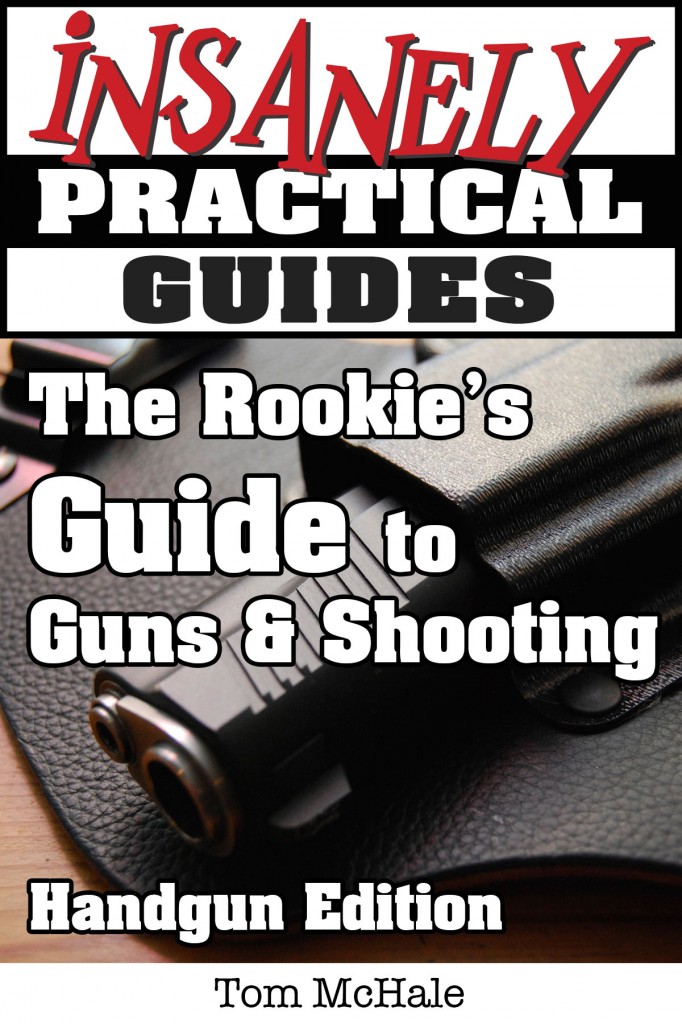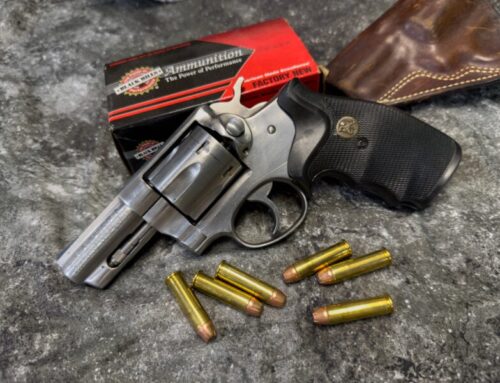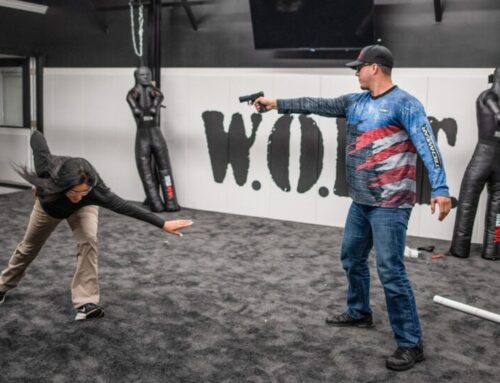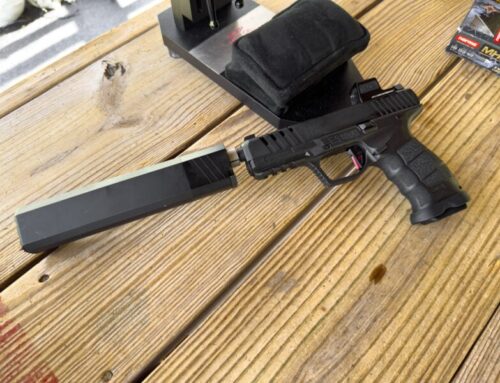Here’s an excerpt from our brand new book, The Rookie’s Guide to Guns and Shooting, Handgun Edition. It’s part of the Insanely Practical Guides series and is loaded with light-hearted education, lots of helpful photos and some comedic relief. Hope you enjoy!
Guns have been annoying politicians longer than you might think. Before we jump into modern day firearm knowledge, let’s take a look at the long and winding road of gun history…
1,100 BC
Legends of the earliest known uses of guns have been passed down through generations of Zoran women. Historians believe that many women folk of Zorah, then near Philistine, gushed and swooned at the sight of Samson’s guns. According to the folklore, Samson had two guns, of exceptionally large caliber. Also according to history, he used those guns on more than one occasion – smiting at least one lion and many Philistine warriors. Sadly, the Zoran Congress, led by Senator Delilah of Timna, Philistia, soon enacted an assault hair ban and Samson was stripped of his guns.
1250 AD
Most historians believe that the key ingredient required to make all those useless guns work was invented around this time. In fact, NRA National Firearms Museum Director Jim Supica claims that Franciscan monk Roger Bacon wrote of the mixture shortly before 1250 A.D. That was an awfully long time ago – just after the birth of Joan Rivers.
Anyway, according to Bacon’s ancient texts, the lute and dulcimer trio of Guns and Roses discovered gunpowder while searching for better ways to wow the crowd at outdoor concerts. The forward-thinking band found that a mixture of charcoal, sulphur and salt peter provided plenty of noise and flash for bitchin’ stage theatrics. Salt Peter, Saint Peter’s long-lost stepbrother, was not at all happy about this recipe and he immediately started work on development of smokeless powders that did not require any of his bodily parts. Progress was slow as smokeless powder was not invented until the late 19th century.
1300
The earliest cannons appeared on the scene. After all, what good was the newly invented gunpowder without something to shoot it from? Early cannons were quite simple – nothing more than a tube open on one end and closed at the other. A small hole near the closed end allowed cannoneers to light a powder charge inside. Crudely constructed from iron, wood and sometimes Mighty Putty, these weapons applied the same basic principles used by guns today.
1350
While loud and impressive, early cannons did little to meet self-defense requirements. Since gun holsters had not yet been invented, concealed carry was not feasible. Hunting with the newly invented firearms was also problematic as many animals were reluctant to stand in front of cannons long enough to be converted to SPAM. In response to complaints of supermarket butchers everywhere, the “hand-gonne” was invented. Simply a downsized cannon mounted on a pole, the hand-gonne struggled for popularity mainly because no one knew how to pronounce the word “gonne.”
1400 to 1639
Clearing up name confusion, people stopped making “hand-gonnes” and replaced them with matchlocks and wheellocks. Matchlock guns featured an exposed flash pan filled with fine – and easy to ignite – priming powder, which would light the main charge to fire the gun. A dangling, and lit, fuse was suspended over the flashpan. A mechanical linkage was used to lower the smoldering fuse into the highly combustible flash pan. Occasionally, the matchlocks would fire when the user wanted, but usually before, after or not at all.
1526
The gun company Beretta is founded in the Foccacia region of Italy, in a town called Brescia. Having made guns prior to this date, company founder Ben Cartwright achieves his first commercial success with production of 185 Arquebus Matchlock barrels for the Arsenal of Venice. The British Secret Service, Double-0 branch, is issued the 186th Arquebus. England quietly canceled the Double-0 program when it was discovered that matchlock rifles concealed poorly under dinner jackets.
1640
The first kinda, sorta reliable flintlock was built. Some astute marketers even guaranteed their flintlocks to be 31% reliable, 67% of the time. Offering major advancements in luxury and comfort, such as heated drivers-side seats, the flintlock allowed shooters to carry their guns pretty much anywhere, except schools and government buildings, of course. As the flintlock features a covered flash pan for priming powder, users could even take their guns into rainy conditions. No longer would major World Wars endure rain delays, thereby minimizing network television scheduling challenges.
As a side note, the phrase “keep your powder dry” came into vogue during the flintlock era. As guns of the time relied on ignition of two separate powder charges – one in the flash pan and one in the barrel – keeping powder dry and flammable was a requirement of guns going bang instead of fzzzlpphhtt.
Stay tuned for the the next phase in firearm history…
The Rookie’s Guide to Guns and Shooting, Handgun Edition is available on Amazon.com now!










Leave A Comment